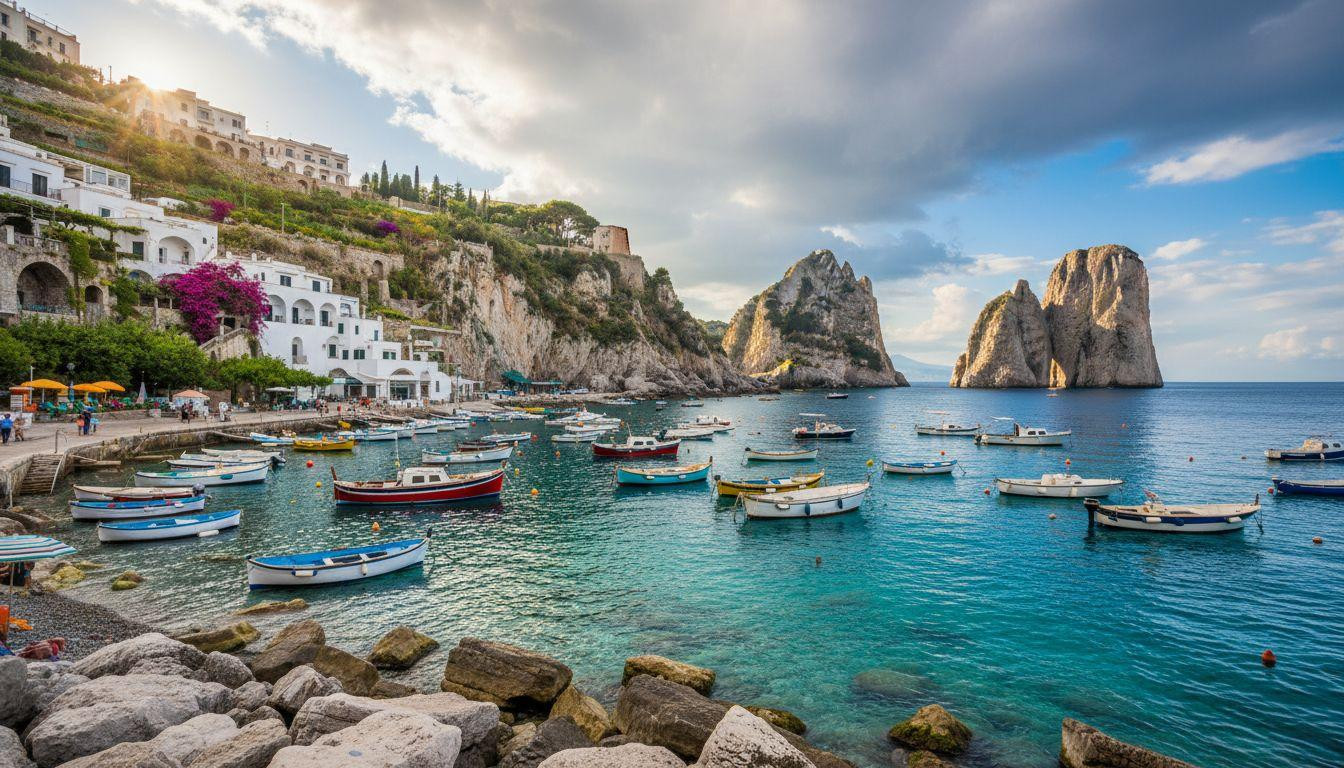The ferry horn echoes across Marina Grande at 8:17 AM, but the next one won’t sound for another 20 minutes. Capri’s new ferry frequency reduction transforms the island’s rhythm from constant arrivals to measured breathing. The policy shift addresses a crushing reality: 20,000 day-trippers flooding this 4-square-mile island every summer day.
The island that suffocated itself
For decades, ferries arrived every 10 minutes during peak season. High-speed hydrofoils completed the 31-mile journey from Naples in 50 minutes. Each boat delivered waves of day-trippers to Marina Grande’s narrow dock.
Summer saturation created impossible scenes. The Piazzetta’s outdoor cafes overflowed by 10 AM. Villa Jovis, perched 1,000 feet above sea level, saw 2-hour queues for Emperor Tiberius’s ruins. The Blue Grotto required advance booking just to join the waiting list.
Local shopkeepers witnessed profits surge while their island’s character dissolved. Restaurant reservations became impossible for locals. The narrow Via Krupp footpath closed indefinitely due to rockfall from excessive foot traffic.
What halving ferry frequency actually changes
The numbers behind the quiet
Every 20 minutes instead of 10 creates a 50% capacity reduction during peak hours. The 20,000 daily visitors drop to an estimated 12,000-14,000 with the new schedule. Restaurant reservations become possible again.
Ferry companies initially resisted the change. The compromise maintains service but forces advance planning. Procida’s pastel harbors stay empty while tourists overflow Capri’s Piazzetta, making the policy necessary.
Who benefits most
Overnight guests gain breathing room at major attractions. November-March visitors see minimal impact since ferry service already reduces naturally during winter months. Day-trippers face longer planning but experience less crowded sites.
Advance booking becomes essential. Ferry tickets from Sorrento cost $35-45 round-trip, while Naples routes run $40-55. The 15-minute Sorrento crossing offers the most frequent service under the new schedule.
Experiencing Capri’s reclaimed rhythm
Morning on a less trampled island
At 7 AM in Anacapri, actual silence surrounds the Monte Solaro chairlift. The 12-minute ride to the 1,932-foot summit costs $13 one-way. Views stretch across the Gulf of Naples without crowds blocking photo angles.
The Gardens of Augustus empty by 11 AM instead of staying packed until 4 PM. Svalbard limits cruise ships to preserve Arctic wilderness through strict visitor boundaries, and Capri follows similar principles.
Local fishing boats return to Marina Piccola’s turquoise waters. The small beach charges no entry fee but umbrella rentals cost $25-35 daily.
The Faraglioni without the crowds
The three towering rock stacks rise 348 feet from crystal-clear water. Photography angles become available at the scenic overlook. Villa Jovis ruins allow contemplation instead of rushed photo-grabbing sessions.
Via Krupp’s zigzag footpath remains closed, but discussions about limited reopening continue. The 20-minute walk would connect the Gardens of Augustus to Marina Piccola. Positano’s cliffside villages offer the same Italian coastal drama without Capri’s crowds, but lack the Blue Grotto’s natural wonder.
Practical realities for 2025-2026 visitors
Ferry booking windows tighten significantly. Reserve tickets 2-3 days ahead during summer months. Hotel rates stabilize as day-tripper spending decreases, potentially improving overnight value long-term.
The best months become April-May and September-October when shoulder season ferry reductions feel less severe. Blue Grotto visits still require early arrival since natural capacity limits remain unchanged. The marine cave accommodates only 4-person rowboats at a time.
Accommodation ranges from $110-165 nightly for guesthouses to $440+ for luxury hotels. Average restaurant meals cost $30-65 per person. Sardinia’s protected pink sand beach recovered after 25 years of forbidden access, showing how restrictions can restore natural beauty.
Your questions about Capri’s ferry frequency reduction answered
Can I still do a day trip from Naples?
Yes, but advance ferry booking becomes essential. Last return ferries depart around 7 PM, creating tighter schedules. Consider staying one night to experience the island without rushing between must-see attractions.
Does this make Capri more expensive?
Hotel prices haven’t increased from the policy alone. Day-trippers spending less may actually improve overnight guest value long-term. Ferry prices remain stable at $35-55 round-trip depending on departure port and vessel type.
Is Capri quieter than Santorini now?
No, Santorini hosts similar visitor volumes but spreads crowds across multiple villages like Oia and Fira. Capri concentrates visitors in Capri town and Anacapri. Ferry reduction helps but doesn’t solve the fundamental space constraints.
The 10-to-20-minute shift won’t restore 1960s Capri, but locals report hearing church bells again during afternoon lulls. The Faraglioni still rise from turquoise water, the Blue Grotto still glows impossible blue, but silence between ferry arrivals feels like the island remembering itself.
